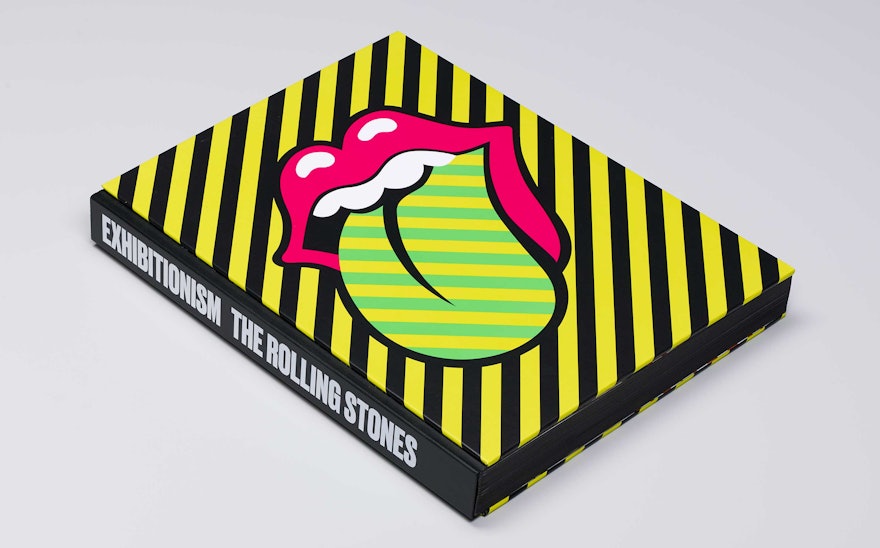For over five decades, the Rolling Stones have continually reinvented themselves as musicians, performers and cultural icons, transforming music, art, fashion and popular culture in the process. This incredible legacy is explored in Exhibitionism – The Rolling Stones, the major exhibition that recently opened at London’s Saatchi Gallery. Pentagram has collaborated on the design of the exhibition, which is produced, originated and conceptualised by Tony Cochrane and Thea Jeanes-Cochrane of iEC Exhibitions and curated by Ileen Gallagher. As part of the project, the designers have also designed Exhibitionism – The Rolling Stones, the book that accompanies the show.
Exhibitionism is the most comprehensive and immersive insight to date into the career of the legendary group that has been called “The Greatest Rock ‘n’ Roll Band.” Pentagram worked closely with Mick Jagger, Keith Richards, Ronnie Wood and Charlie Watts (whose first job was working as a graphic designer for Bob Gill, one of Pentagram’s founding partners). Synthesizing environments, objects, media and sound, Miller and Russell have designed a dramatic experience that captures the revolutionary spirit of the Stones. Comprising 20,000 square feet, on two floors of the Saatchi Gallery, the exhibition presents an engaging narrative journey through the band’s 50-year career, told through a series of thematic installations that includes, among others, a recreation of their infamous first apartment on Edith Grove in Chelsea and a gallery that delivers a sense of the band’s incredible stage presence.
The immersive experience of Exhibitionism is mirrored in the accompanying book. The beautifully produced volume documents the materials in the show, providing an in-depth look at the band and its impact. A series of portfolios showcase instruments, clothing, original art and sources from the development of the band’s album covers, and documentation of stage designs for tours. The book also reproduces pages from original notebooks with lyrics and the tape boxes from the original recording sessions, as well as stills from films, videos and documentary footage.
Over the years, the Stones have worked with many musicians, producers, stage designers, clothing designers, filmmakers and other creative collaborators to realize their vision. The book includes interviews with many of these collaborators, including Buddy Guy, Martin Scorsese, and Patrick Woodroffe, as well as people the Stones have influenced, including Anna Sui and John Varvatos. The book opens with an essay by the noted music journalist Anthony DeCurtis. Transcripts from the interviews conducted with the band for the exhibition are included in the book, giving them the opportunity to narrate their own history.
The eye-catching cover features a new take on the Rolling Stones’ iconic Tongue and Lip Design logo that layers the symbol in a striking striped traffic pattern, a reference to the traveling exhibition. The book design builds on the overall graphic language of the exhibition. Title typography is set in Druk, which is used in the exhibition graphics and helps create a context for the band’s late 1960s origins.

